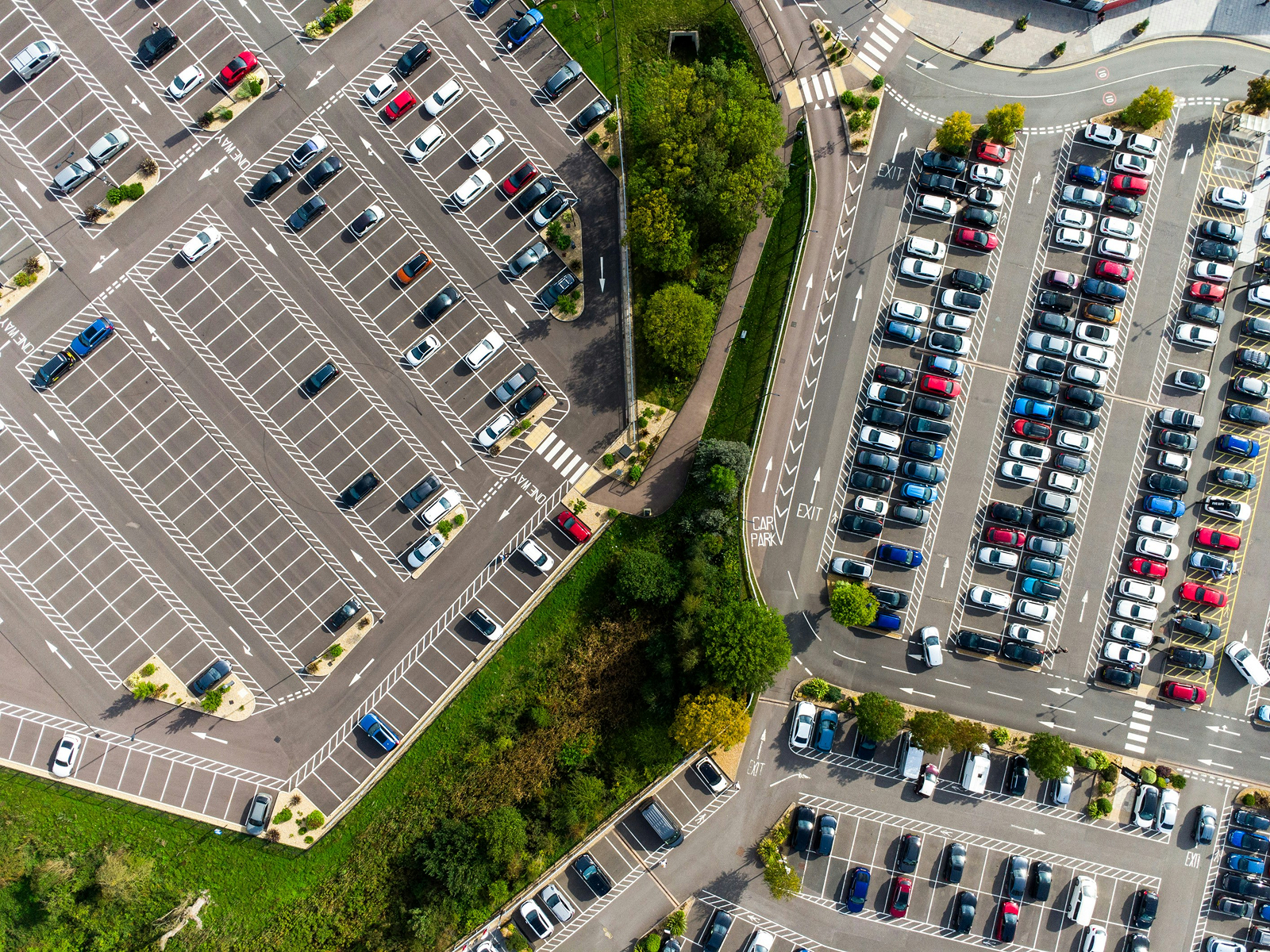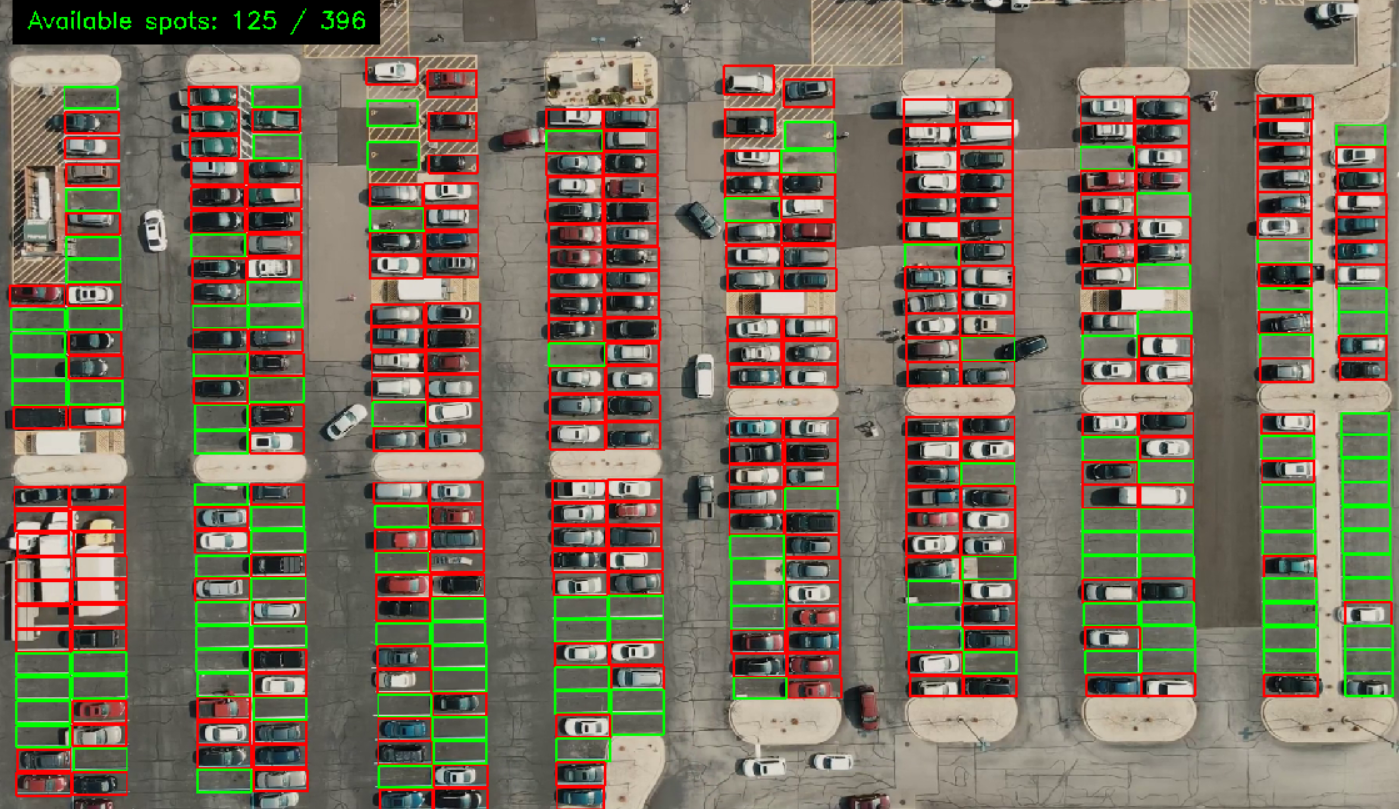| Industry: | Facility Management |
|---|---|
| Headquarters: | London, United Kingdom |
| Company size: | 50-100 |
| Our services: | AI & Computer Vision, Edge Computing, Cloud API Development, UI/UX Design, DevOps & Deployment |
Overview
Urban drivers can spend up to a third of their trip circling for a parking space, wasting fuel, time, and patience. The Smart Parking Spot Detection System is a computer-vision platform that transforms ordinary CCTV cameras into intelligent sensors, instantly revealing which bays are free or occupied. By streaming live availability to both lot operators and incoming drivers, the solution streamlines traffic flow in shopping malls, airports, hospitals, and corporate campuses without the expense of digging up asphalt for in-ground sensors.

Client Objective
Our client—a regional parking-management company that oversees several multi-storey garages—sought to eliminate congestion at peak hours, raise turnover on premium spaces, and capture reliable utilisation data for future capacity planning. They specifically wanted a solution that could be deployed during a single overnight maintenance window, leveraged their existing camera network, and required minimal day-to-day oversight by on-site staff.
Our Approach
We began by auditing each facility’s camera layout, lighting conditions, and network bandwidth to ensure video feeds could be processed with low latency. A dataset of fifteen thousand annotated frames was then curated, representing daytime, night-time, and wet-weather scenarios across four very different lots. Using this corpus, we fine-tuned a YOLOv8 object-detection model to classify every marked bay in less than eighty milliseconds per frame. To keep bandwidth costs down we adopted an edge-first architecture: a lightweight Python service runs on inexpensive Jetson Nano boxes mounted in the control room, performs real-time inference, and publishes JSON events to a cloud API. The cloud layer aggregates results, applies business rules (such as dynamic pricing triggers), and serves both a React dashboard and a REST endpoint that the client can embed in its mobile app.

Challenge
The parking detection system faced multiple challenges including diverse camera angles and heights that caused perspective distortion and occlusions. Varying lighting conditions, such as night-time glare and reflections on wet surfaces, complicated accurate vehicle detection. Large vehicles occasionally obscured multiple parking spots, confusing the model. Maintaining real-time performance on low-power edge devices required model pruning and optimization. Data augmentation was essential to improve robustness across different weather and lighting scenarios, ensuring reliable detection in all conditions.
Results
The system achieved a high detection accuracy of 94%, significantly reducing driver search times by 50%, cutting the average from six minutes to just three. Revenue during peak hours increased by 12% due to faster turnover and dynamic pricing enabled by real-time data. The deployment was seamless with zero downtime, allowing uninterrupted parking operations. Customer satisfaction improved as congestion eased, and the client gained actionable insights for future capacity planning. Overall, the solution delivered measurable efficiency gains and a smoother parking experience.
Key Features
Unlike traditional sensor grids, our platform relies solely on existing IP cameras, allowing a car park of two thousand spaces to go live overnight. A single web dashboard provides colour-coded occupancy overlays, historical utilisation graphs, rule-based alerts, and multi-lot switching for regional supervisors. Because every detection event is published through a versioned REST API and an optional WebSocket stream, third-party developers can build consumer-facing apps or tie the data into city-wide smart-mobility platforms. The system is also designed for horizontal scaling: adding a new facility is as simple as registering its camera RTSP addresses, drawing polygons around each bay in the admin tool, and letting the model fine-tune itself on collected samples.
Impact
By the end of the first quarter the client reported a fifty-percent reduction in average search time, a twelve-percent uplift in revenue per bay during peak periods, and a seventeen-percent drop in idle-time carbon emissions thanks to fewer cars cruising the aisles.
50%
Reduction in average driver search time for parking spots
17%
Decrease in vehicle idle emissions within the parking area
94%
Accuracy in real-time spot detection, ensuring reliable data
12%
Increase in parking lot revenue during peak hours




